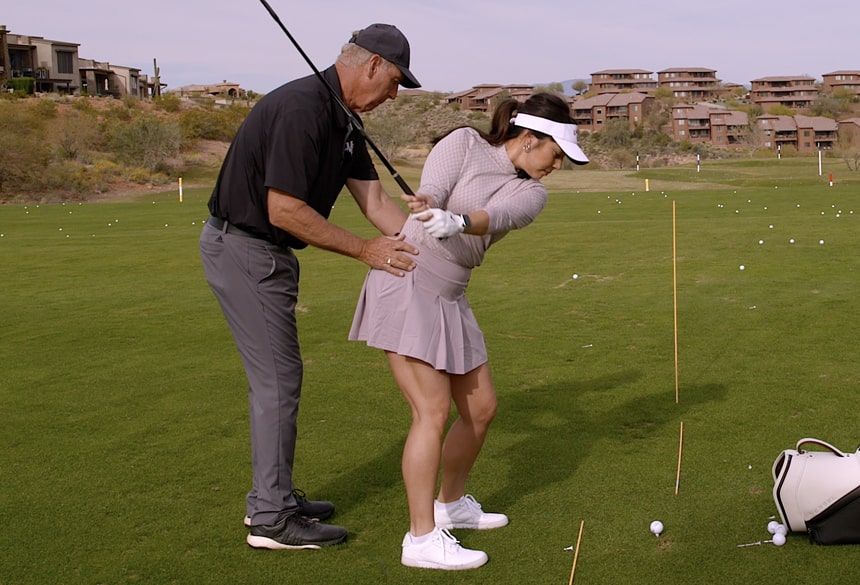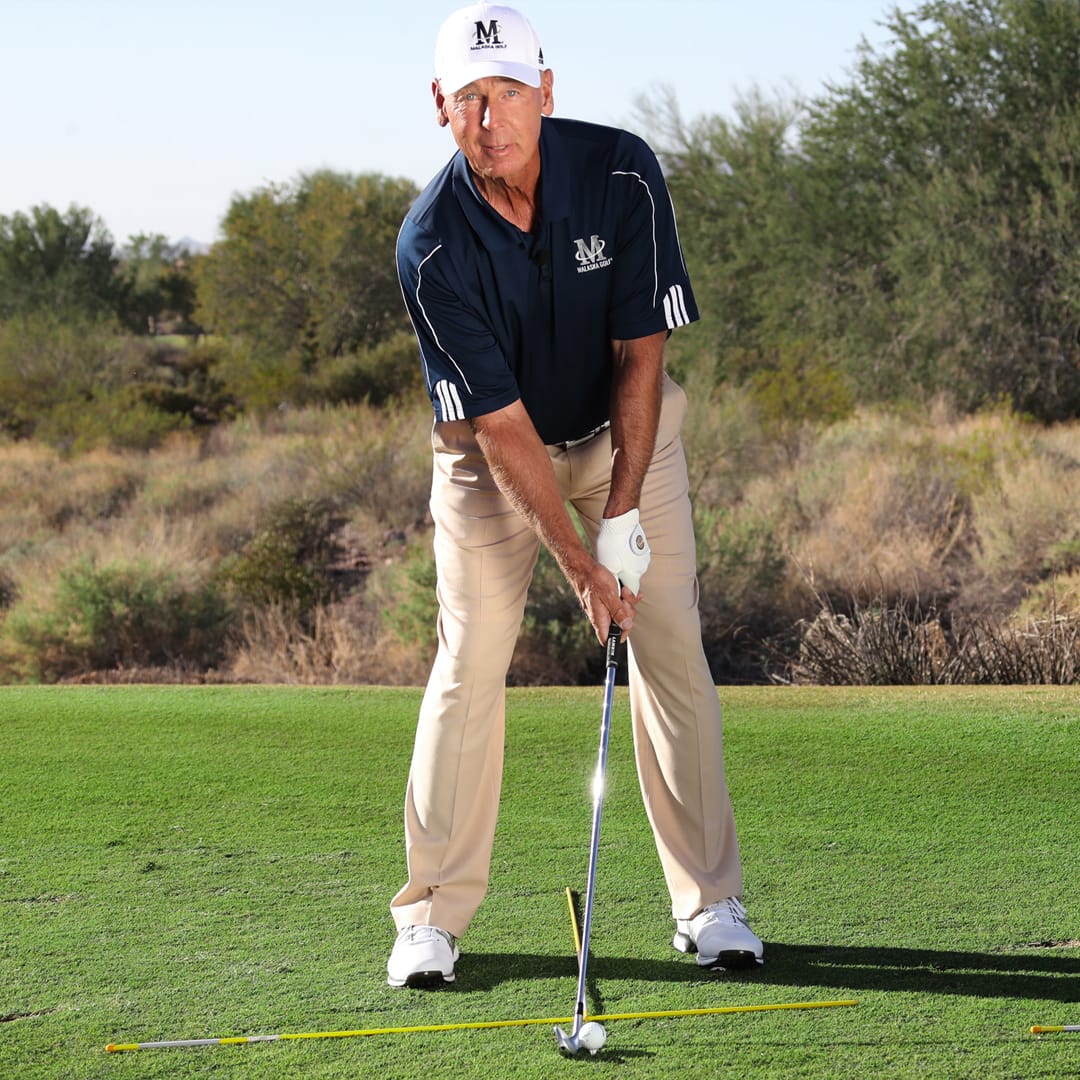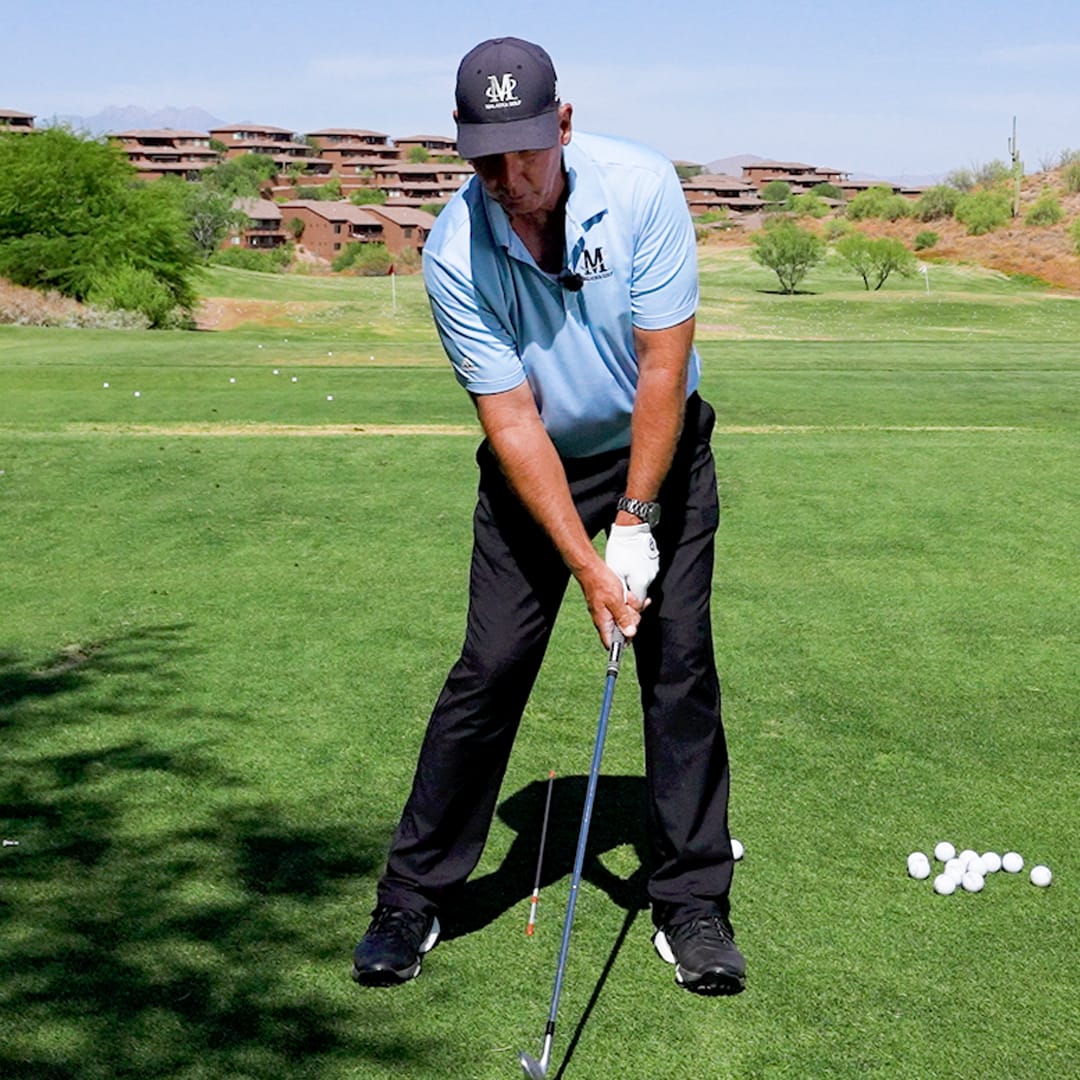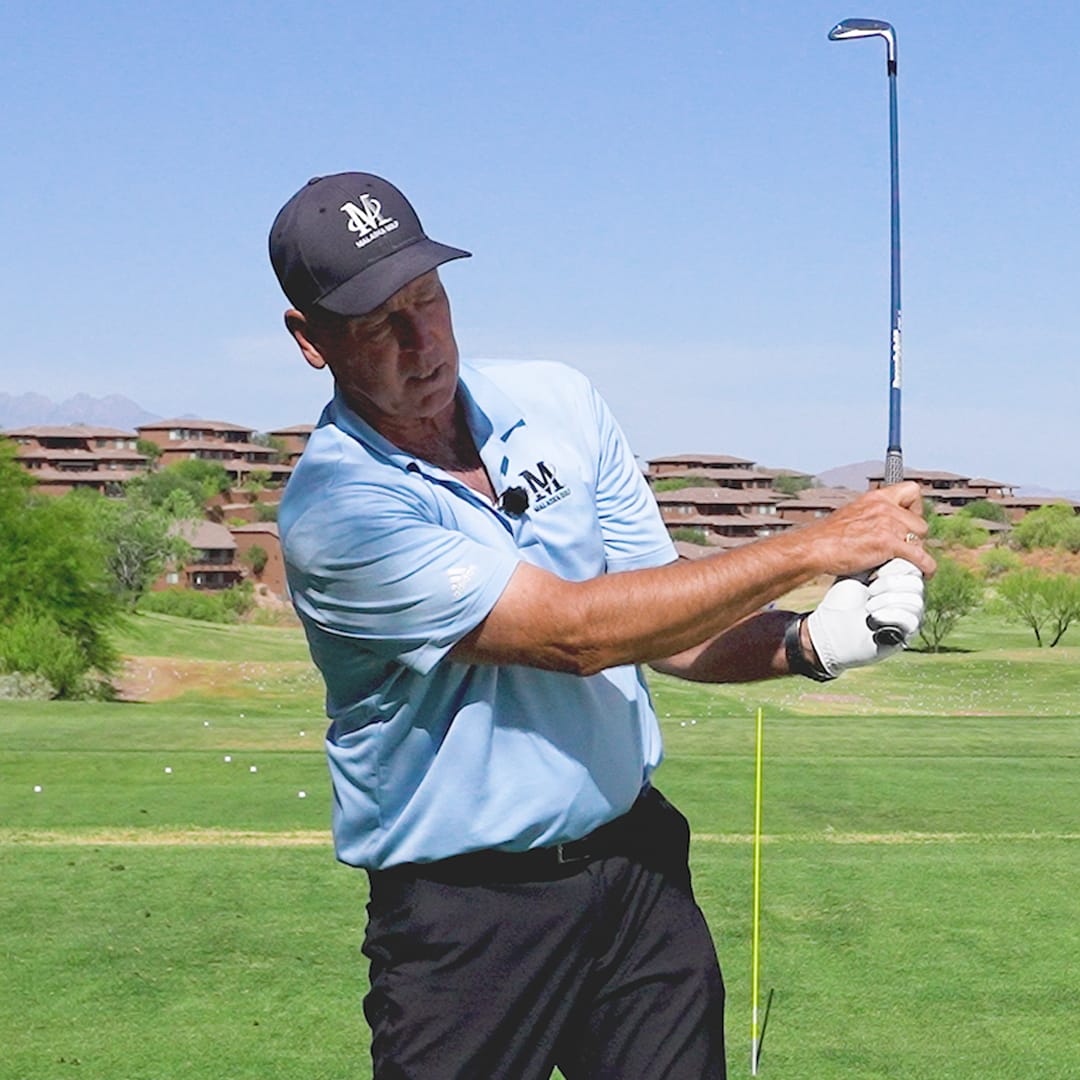LESS FOREARM ROTATION
Mastering a consistent and powerful golf swing can be challenging, but simplifying certain movements can make all the difference. In this lesson, golf instructor Mike Malaska works with Ashley Huizing to address excessive forearm rotation and hip misalignment, two common issues that lead to inconsistent and off-target shots.
By focusing on stable wrist positioning, proper hip movement, and natural club arc, Mike helps Ashley build a more controlled, accurate swing. Here’s a breakdown of the core elements Mike emphasizes for improving swing mechanics and how you can apply them to your own game.
1. Reduce Over-Reliance on Forearm Rotation:
Excessive rotation often creates inconsistency. By minimizing this movement, Ashley can maintain a stable clubface, leading to better alignment and accuracy. Mike demonstrates how simplifying wrist movement during the swing allows for more controlled, powerful shots without constant adjustment.
2. Focus on Proper Hip Movement to Protect Your Knees:
Mike encourages Ashley to focus on pushing her left hip back instead of allowing her right hip to push forward. This small adjustment not only prevents knee strain but also helps Ashley maintain distance from the ball, allowing for a consistent and aligned swing path.
3. Enhance Control with a Stable Wrist Position:
Instead of flipping the club at impact, Mike teaches Ashley to maintain a stable wrist position, allowing the club to stay square to the arc. Through small pitch shots, she practices this movement, which leads to straighter shots and reduces the need for corrective actions mid-swing.
4. Prevent Early Extension by Correcting Hip Mechanics:
Early extension is a common issue where golfers move their body toward the ball during the downswing. Mike guides Ashley to focus on her left hip moving back, allowing her to stay aligned with the target and prevent the club from falling too far inside.
5. Allow the Club to Follow a Natural Arc After Impact:
Mike emphasizes that the club should naturally swing left after impact. This technique, known as "separation," keeps the clubface square, creating straighter, more powerful shots. By letting the club follow this arc, Ashley reduces tension and increases shot control.
6. Conclusion:
Improving your swing doesn’t have to be overly complicated. By focusing on reducing unnecessary forearm rotation, stabilizing the wrists, and mastering hip alignment, you can build a consistent, powerful swing. Practice these small adjustments regularly to see your control and accuracy improve on the course. Simplifying your swing mechanics can lead to more confidence and better performance, just like Ashley’s lesson with Mike shows.






